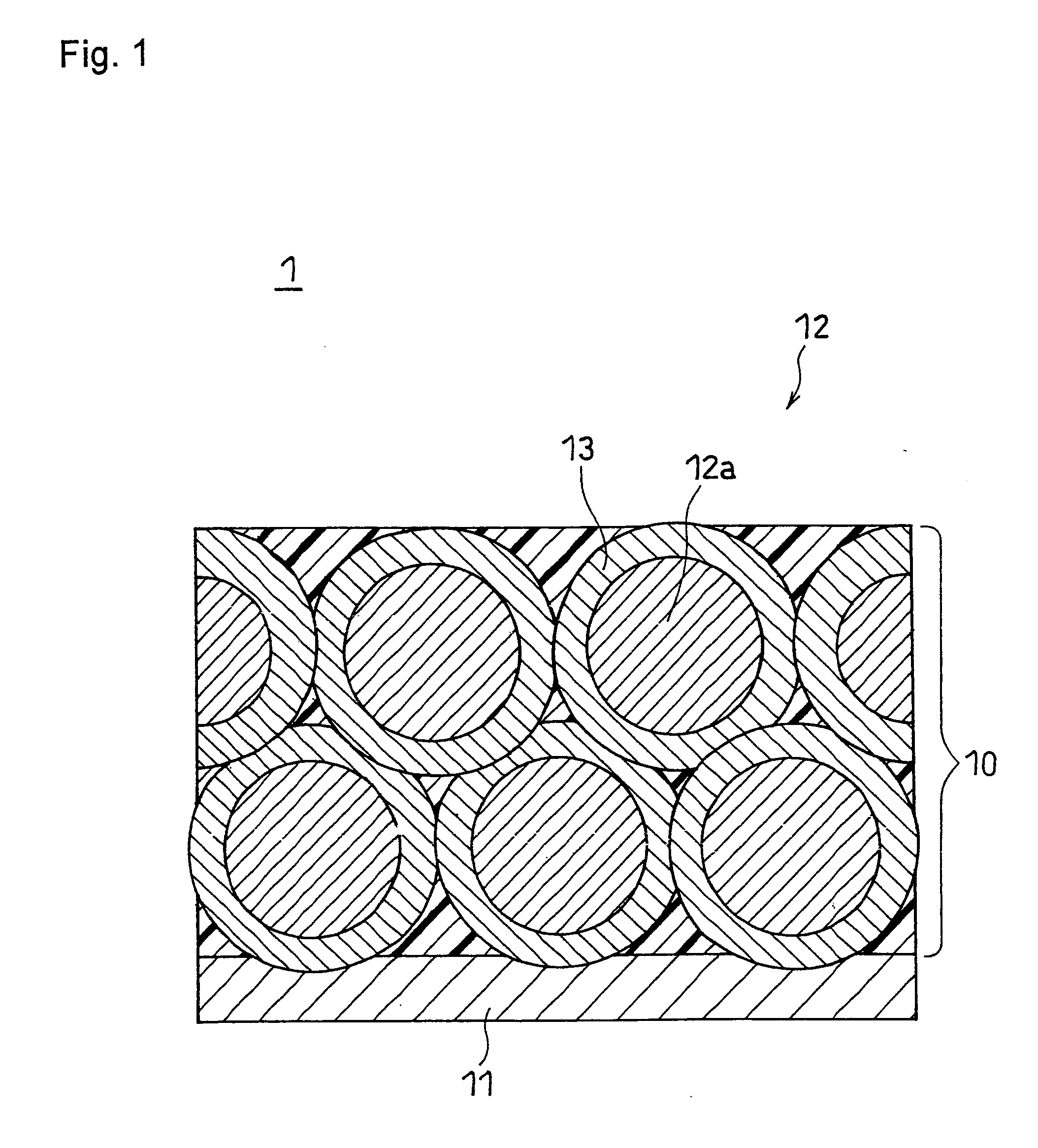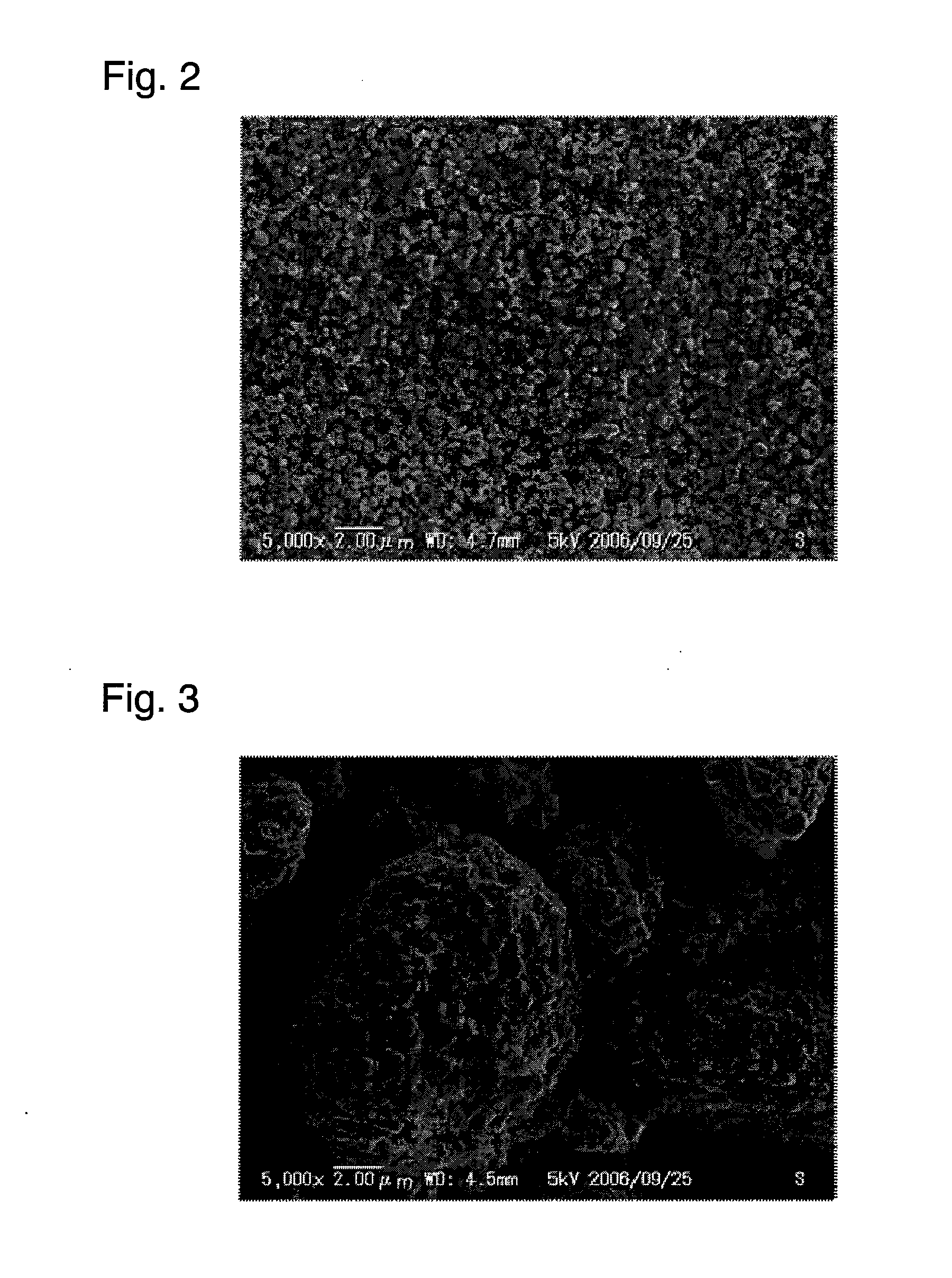Positive electrode for non-aqueous electrolyte secondary battery and non-aqueous electrolyte secondary battery
a technology of non-aqueous electrolyte secondary battery and positive electrode, which is applied in the direction of cell components, basic electric elements, transportation and packaging, etc., can solve the problems of insufficient effect of improving the secondary particle collapse, and inability to reduce battery capacity, etc., to reduce the collapse of active materials, improve the effect of charge/discharge cycle life characteristics, and prolong the li
- Summary
- Abstract
- Description
- Claims
- Application Information
AI Technical Summary
Benefits of technology
Problems solved by technology
Method used
Image
Examples
example 1
(1) Production of Positive Electrode Active Material
[0076]To an aqueous NiSO4 solution, sulfates of Co and Al were added such that the molar ratio of Ni:Co:Al was 7:2:1, to prepare an aqueous saturated solution, and then a sodium hydroxide solution was gradually added dropwise to the resultant aqueous saturated solution while being stirred, to neutralize the solution, whereby a ternary precipitate represented by Ni0.7Co0.2Al0.1(OH)2 was produced by coprecipitation. The produced precipitate was collected by filtration, washed with water, and dried at 80° C., to give a composite hydroxide. The volume average particle size of the composite hydroxide thus obtained was measured with a particle size distribution meter (trade name: MT3000, available from Nikkiso Co., Ltd.). The result found that the volume average particle size was 12 μm.
[0077]This composite hydroxide was heated at 900° C. in air for 10 hours, to give a ternary composite oxide represented by Ni0.7CO0.2Al0.1O. The structure...
example 2
[0086]Primary particles of positive electrode active material were produced in the same manner as in Example 1. Subsequently, 100 parts by weight of the primary particles of positive electrode active material and 3 parts by weight of alumina (Al2O3, metal oxide) were mixed for 30 minutes in the circulation-type mechanofusion system. To the resultant mixture, 3 parts by weight of acetylene black was added and mixed for 30 minutes in the circulation-type mechanofusion system, to give composite primary particles. The operating conditions of the circulation-type mechanofusion system were the same as those in Example 1 in both steps. The composite primary particles thus obtained were observed under a scanning electron microscope, and as a result, no aggregate of the foregoing composite primary particles (i.e., secondary particle) was observed.
[0087]The non-aqueous electrolyte secondary battery of the present invention was fabricated in the same manner as in Example 1 except that the comp...
example 3
[0088]Composite primary particles were produced in the same manner in Example 1. Next, 3.09 kg of the composite primary particles, 1000 g of polyvinylidene fluoride solution (KF1320), 60 g of acetylene black, and an appropriate amount of NMP were kneaded together in a planetary mixer, to give a positive electrode material mixture slurry. Here, based on the total of the amount of the conductive agent coating the surface of the positive electrode active material and the amount of the conductive agent contained in the positive electrode material mixture slurry, the conductive agent was used in a ratio of 5 parts by weight per 100 parts by weight of the positive electrode active material.
[0089]The non-aqueous electrolyte secondary battery of the present invention was fabricated in the same manner as in Example 1 except that the positive electrode material mixture slurry thus obtained was used in place of the positive electrode material mixture slurry of Example 1.
PUM
| Property | Measurement | Unit |
|---|---|---|
| particle size | aaaaa | aaaaa |
| particle size | aaaaa | aaaaa |
| particle size | aaaaa | aaaaa |
Abstract
Description
Claims
Application Information
 Login to View More
Login to View More - R&D
- Intellectual Property
- Life Sciences
- Materials
- Tech Scout
- Unparalleled Data Quality
- Higher Quality Content
- 60% Fewer Hallucinations
Browse by: Latest US Patents, China's latest patents, Technical Efficacy Thesaurus, Application Domain, Technology Topic, Popular Technical Reports.
© 2025 PatSnap. All rights reserved.Legal|Privacy policy|Modern Slavery Act Transparency Statement|Sitemap|About US| Contact US: help@patsnap.com



